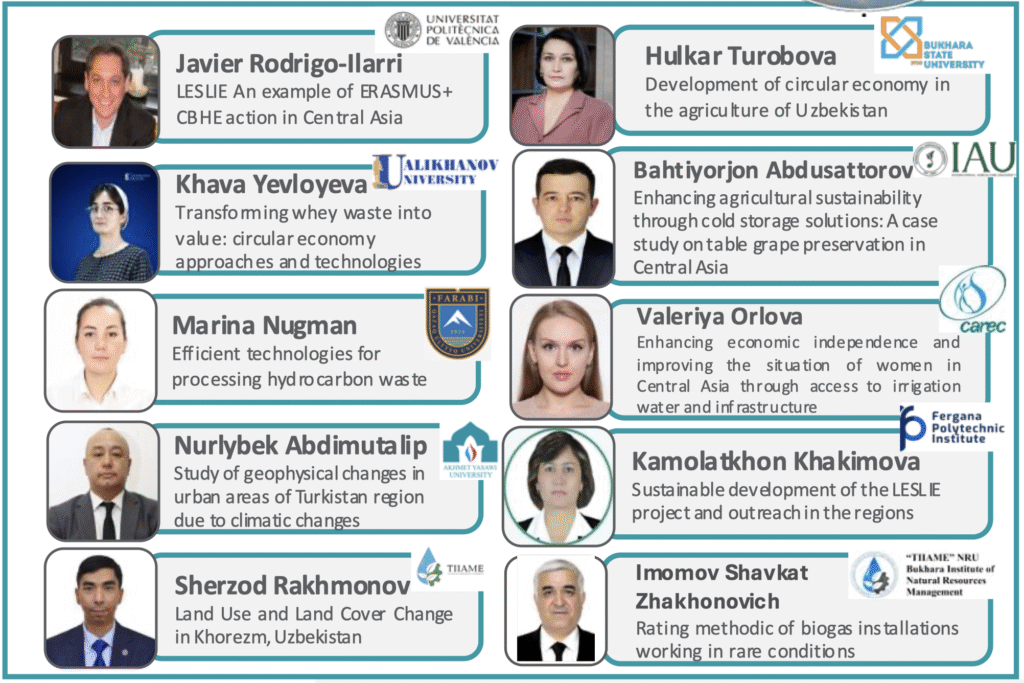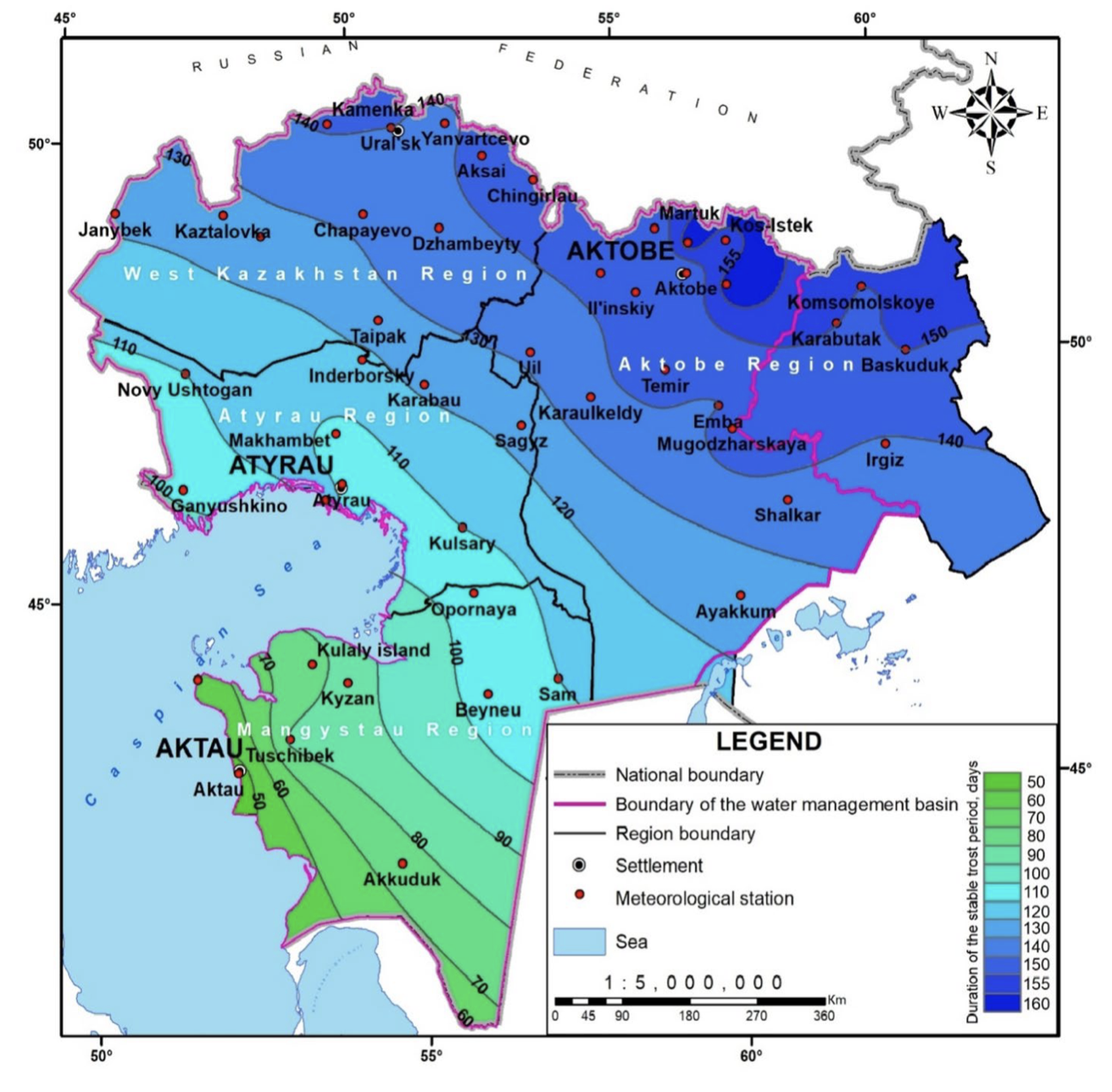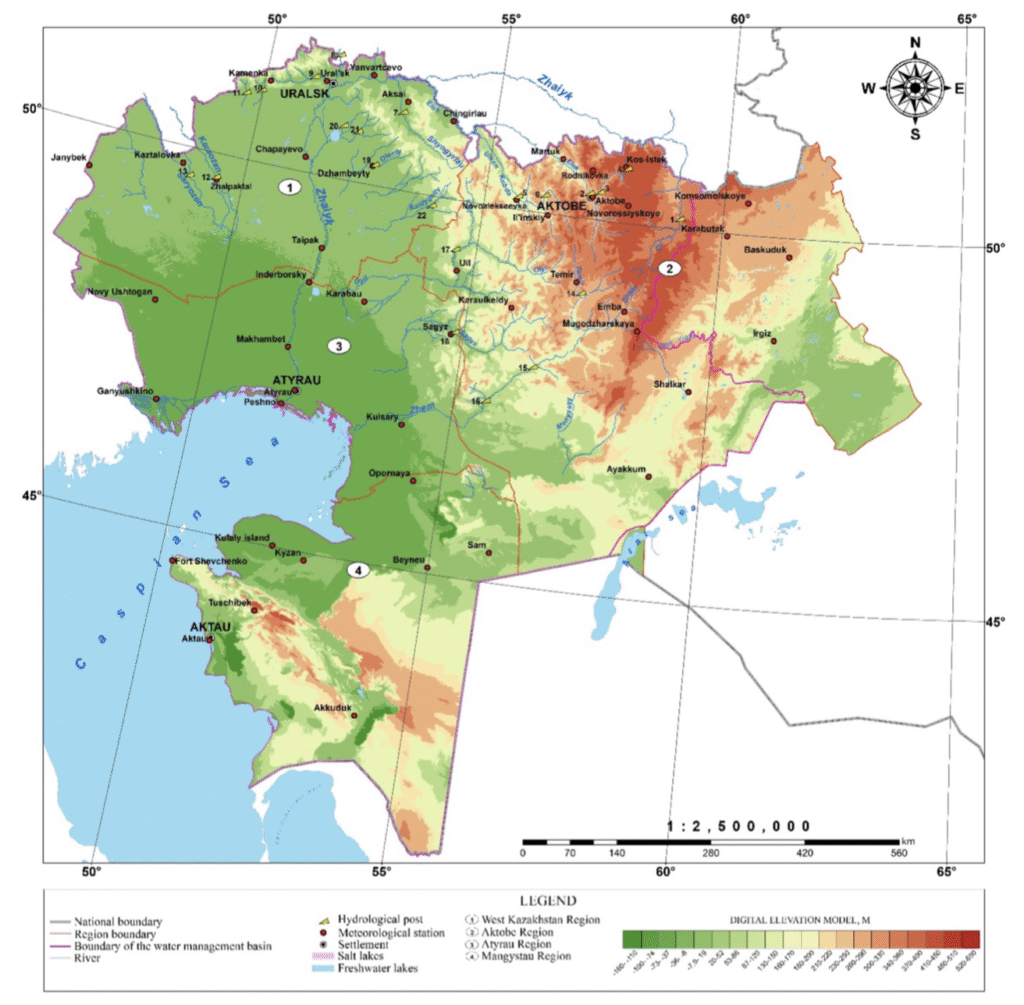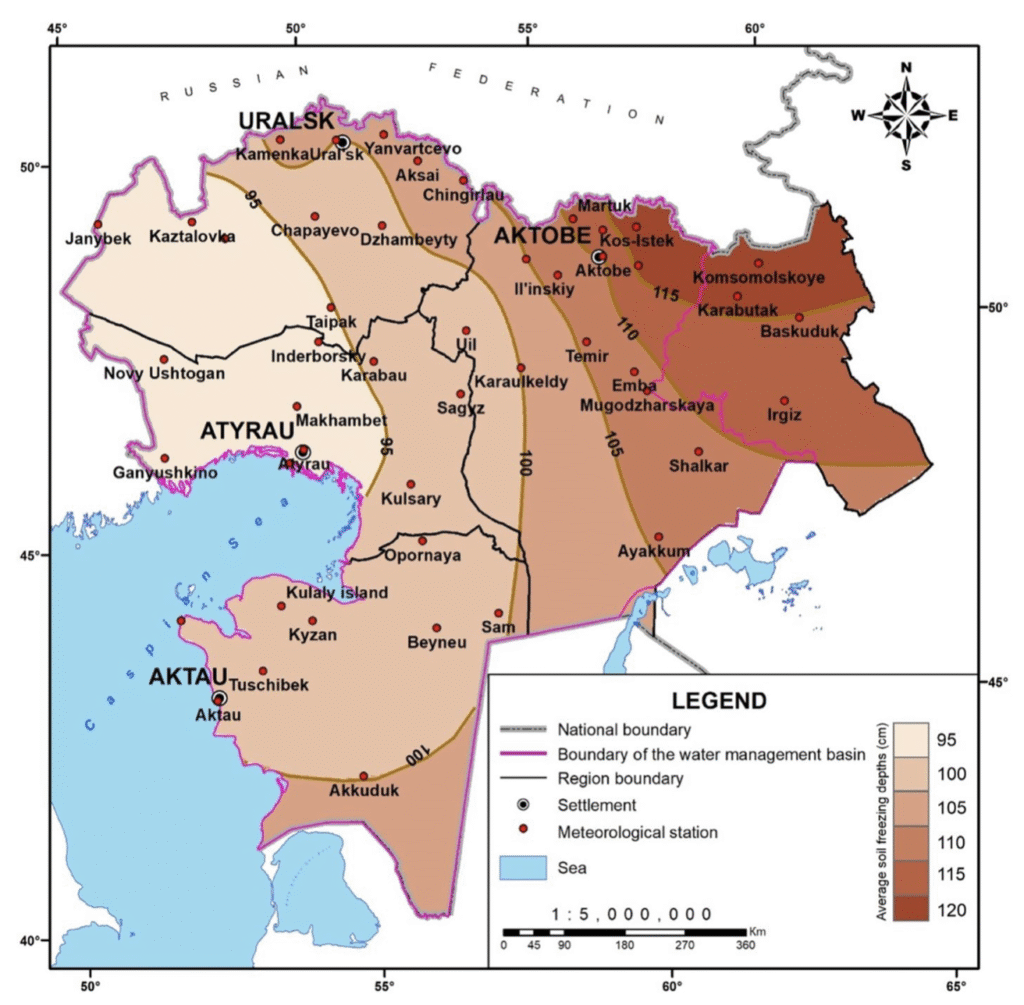On 21 October 2025, from 4:00 to 6:00 PM, the Global Hour Meeting took place at Shoqantanu Hall of Ualikhanov University in Kokshetau, Kazakhstan. The event provided an open forum for faculty members, department heads, and project coordinators to discuss ongoing and future international cooperation initiatives within the university.

The meeting was chaired by the Vice-Rector for Digitalization and International Cooperation, who emphasized the growing importance of global engagement and collaborative innovation in higher education. Representatives of several international projects were present, including members of the LESLIE Project (Land Management, Environment & Solid Waste: Inside Education and Business in Central Asia).
During the session, participants shared experiences and best practices in managing and implementing international projects, highlighting the benefits of interdisciplinary collaboration and capacity building. The LESLIE representatives presented the project’s objectives and key achievements, particularly its efforts to develop micro-credentials and digital learning tools in Sustainable Land Management (SLM) across Central Asia.
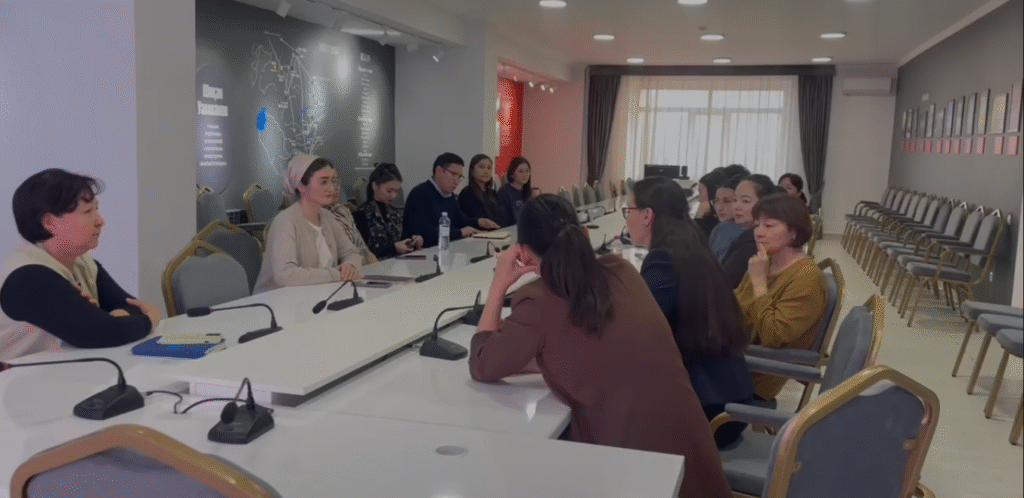
Discussions also explored future strategies to strengthen Ualikhanov University’s role in European-funded programmes such as Erasmus+, foster new academic partnerships, and expand opportunities for students and staff mobility.
The Global Hour initiative reaffirmed the university’s commitment to internationalization and innovation, while recognizing the LESLIE Project as a catalyst for advancing environmental education, digital transformation, and sustainable development in the region.

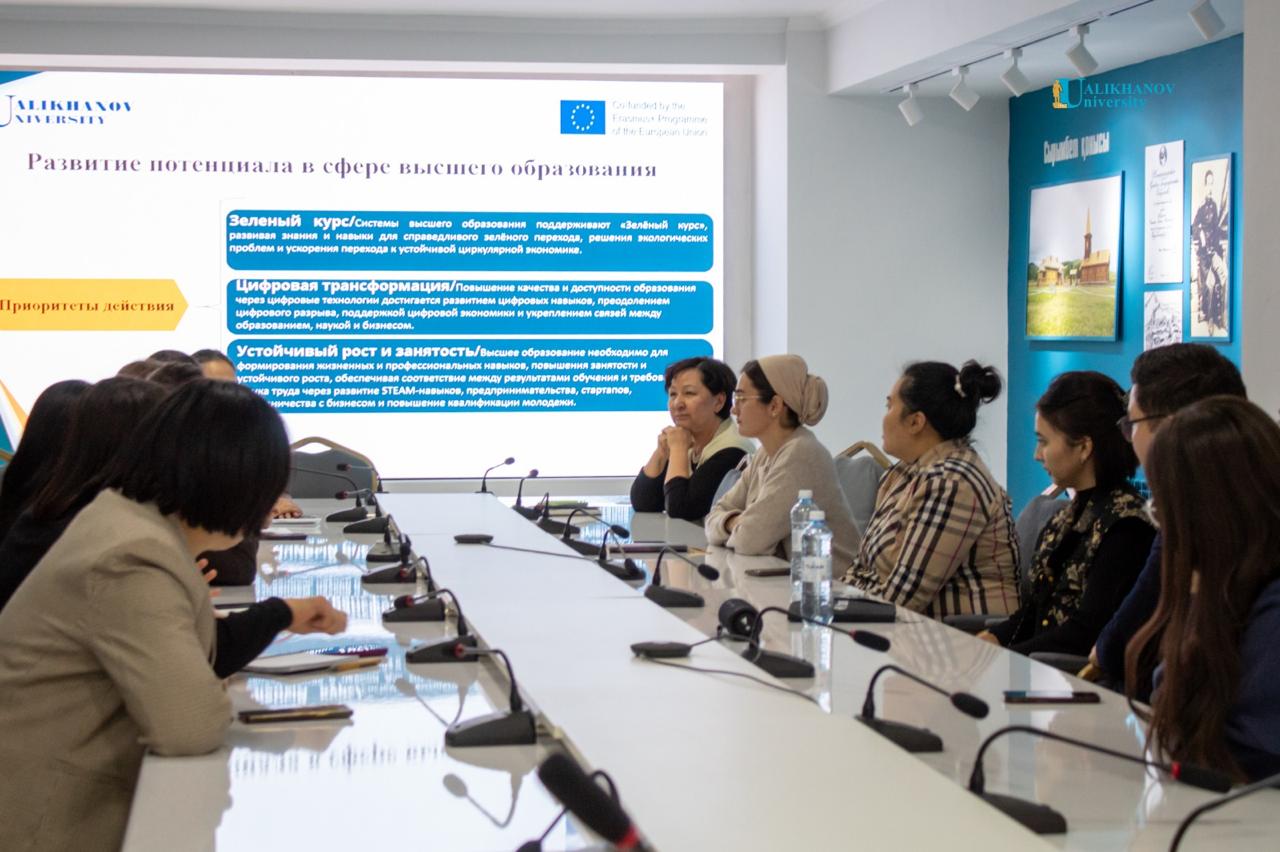
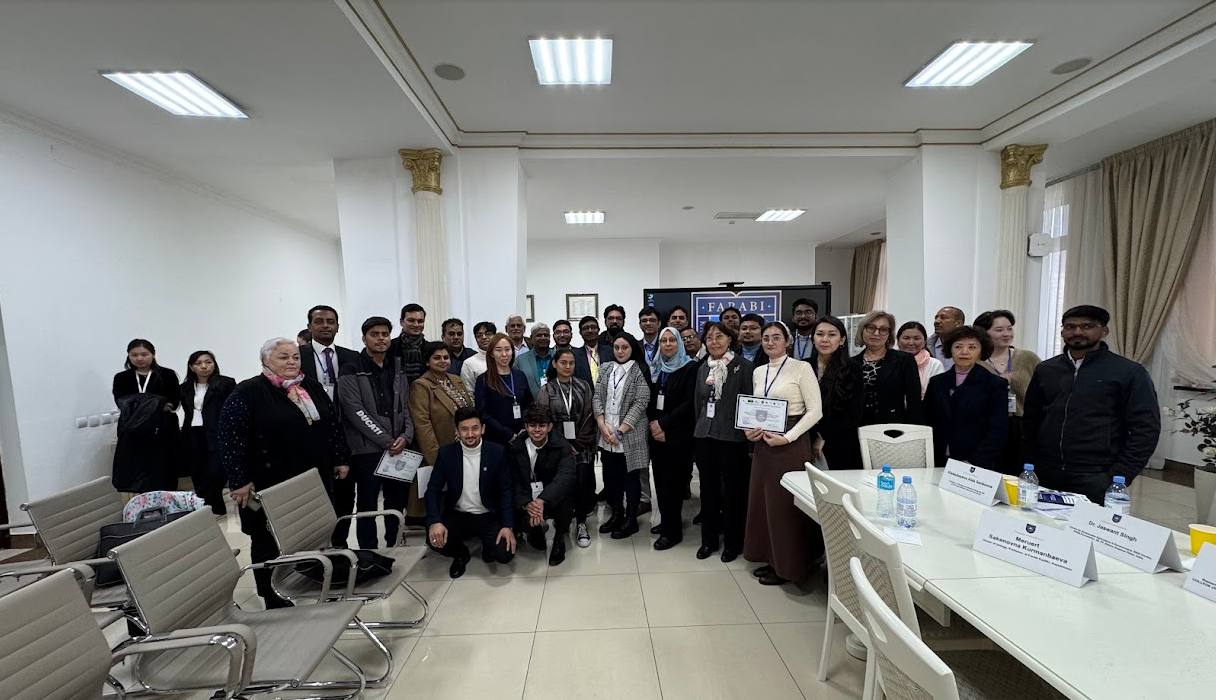
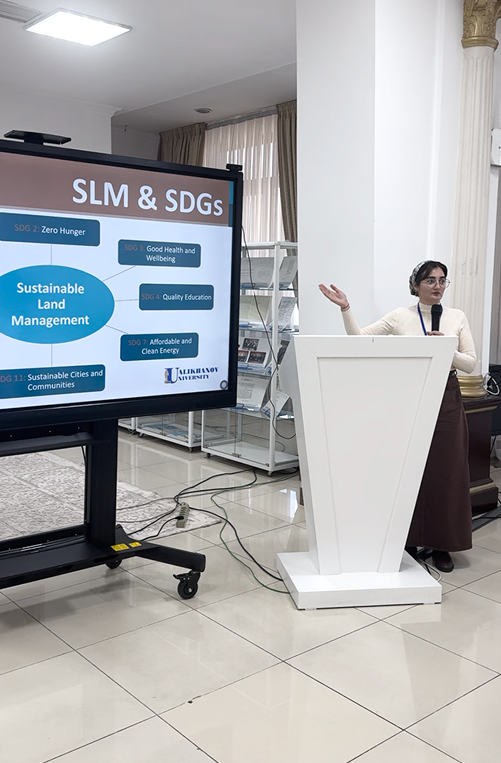
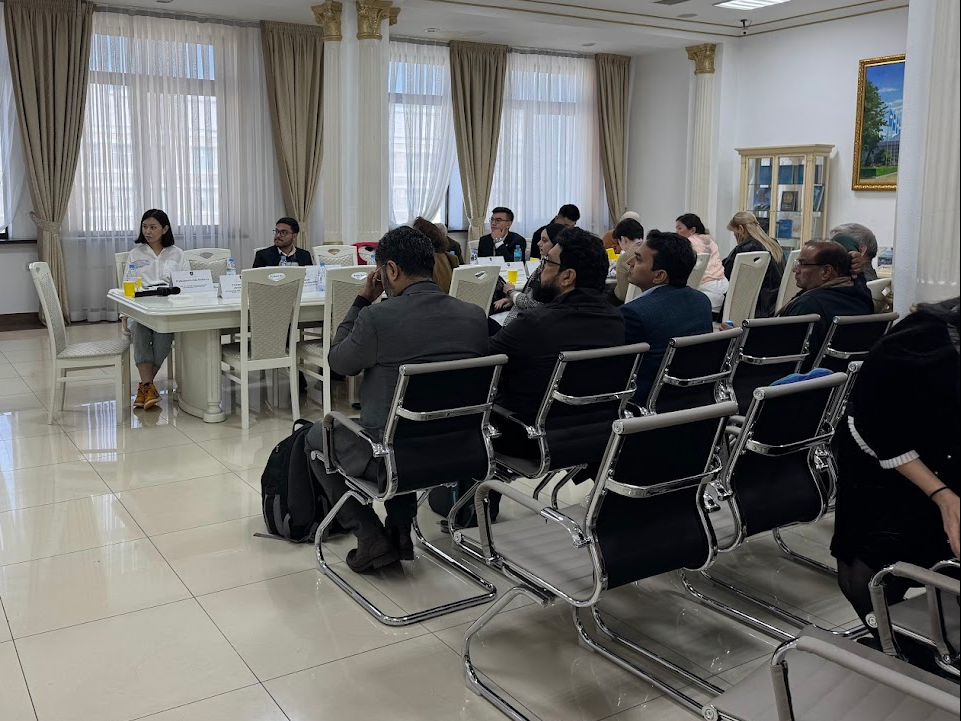
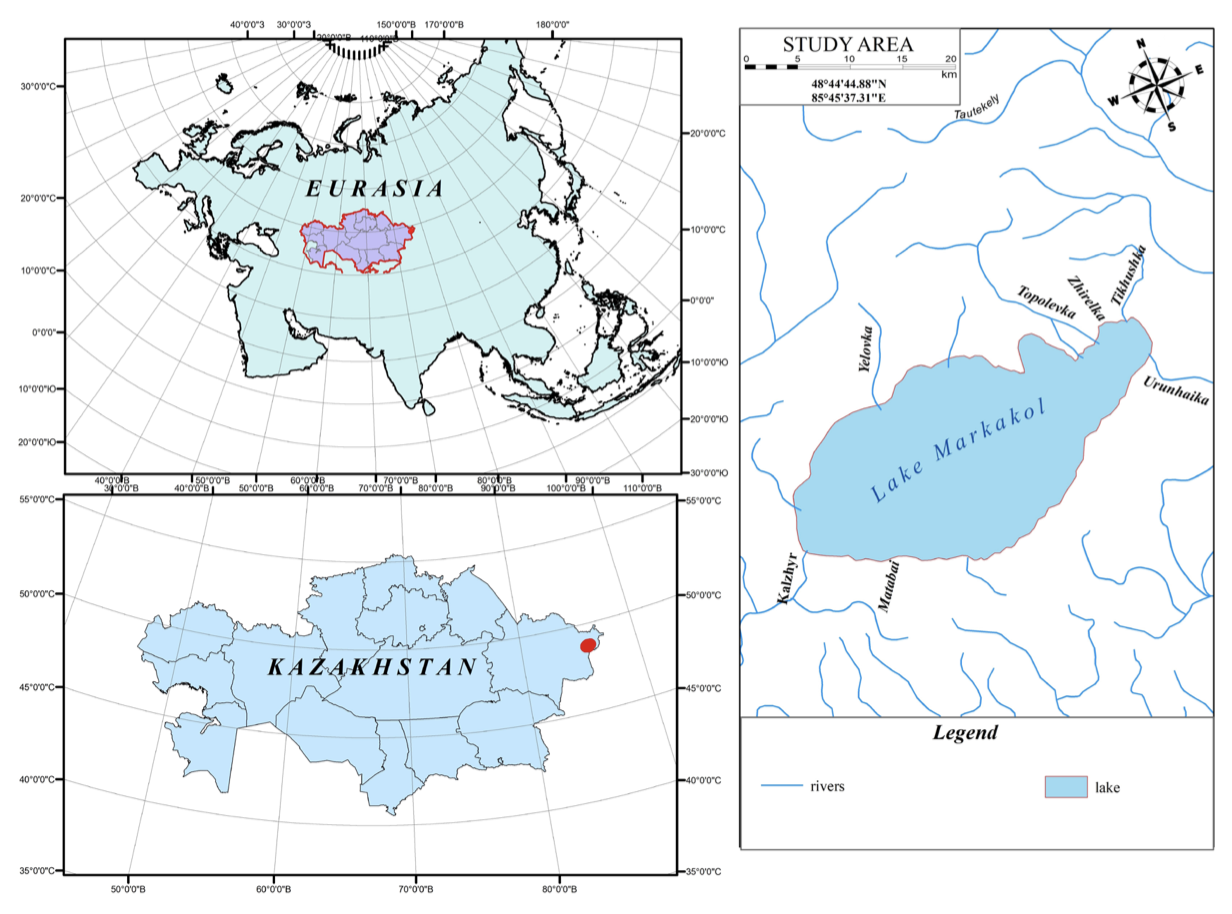
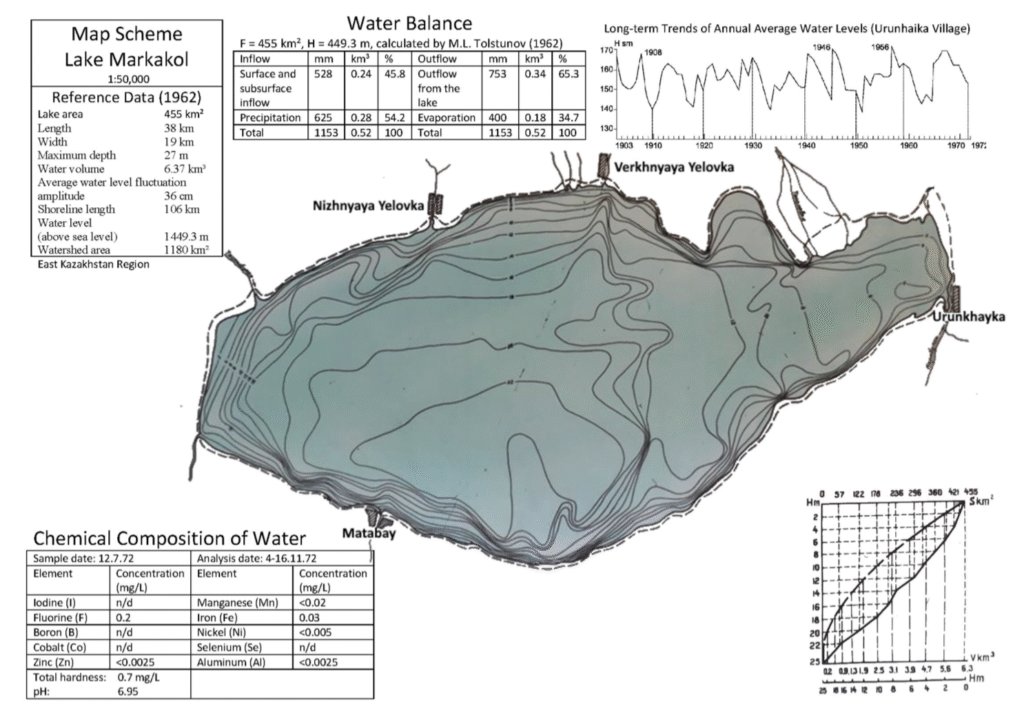 Researchers from the Department of Meteorology and Hydrology, Faculty of Geography and Environmental Sciences, Al-Farabi Kazakh National University, Almaty, Universitat Politècnica de València (UPV), and other Kazakh institutions have published this joint research study which presents the first centimeter-scale, high-resolution bathymetric model of Lake Markakol (eastern Kazakhstan), generated using advanced hydroacoustic and geospatial techniques.
Researchers from the Department of Meteorology and Hydrology, Faculty of Geography and Environmental Sciences, Al-Farabi Kazakh National University, Almaty, Universitat Politècnica de València (UPV), and other Kazakh institutions have published this joint research study which presents the first centimeter-scale, high-resolution bathymetric model of Lake Markakol (eastern Kazakhstan), generated using advanced hydroacoustic and geospatial techniques.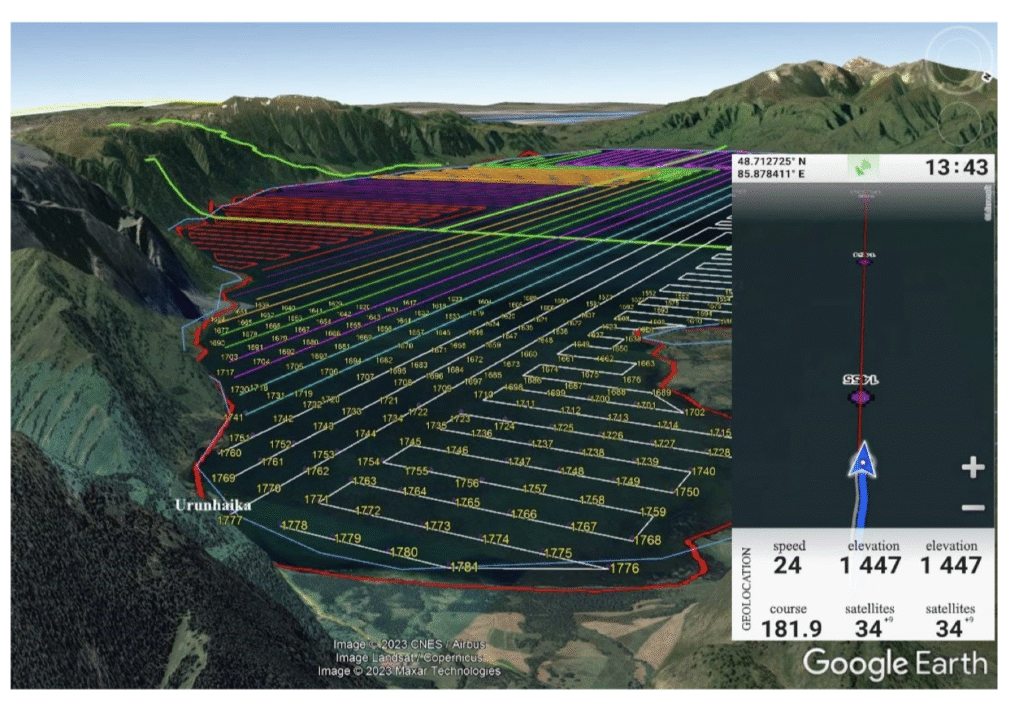 The primary objective was to reassess key morphometric parameters—surface area, depth, volume, and shoreline configuration—more than six decades after the only existing survey from 1962. High-density depth data were acquired with a Lowrance HDS-12 Live echo sounder, achieving vertical precision of ±0.17 m, and processed using ReefMaster and ArcGIS to produce a three-dimensional, hydrologically correct model of the lake basin. Compared with archival data, results show that while the surface area (455.365 ± 0.005 km 2 ), length (38.304 ± 0.002 km), and width (19.138 ± 0.002 km) have remained stable, the maximum depth is lower (24.14 ± 0.17 m vs. 27 m), and the total water volume is slightly higher (6.667 ± 0.025 km 3 vs. 6.37 km 3 ). These differences highlight both the limitations of historical lead-line surveys and the enhanced accuracy of modern hydroacoustic and GIS-based methods.
The primary objective was to reassess key morphometric parameters—surface area, depth, volume, and shoreline configuration—more than six decades after the only existing survey from 1962. High-density depth data were acquired with a Lowrance HDS-12 Live echo sounder, achieving vertical precision of ±0.17 m, and processed using ReefMaster and ArcGIS to produce a three-dimensional, hydrologically correct model of the lake basin. Compared with archival data, results show that while the surface area (455.365 ± 0.005 km 2 ), length (38.304 ± 0.002 km), and width (19.138 ± 0.002 km) have remained stable, the maximum depth is lower (24.14 ± 0.17 m vs. 27 m), and the total water volume is slightly higher (6.667 ± 0.025 km 3 vs. 6.37 km 3 ). These differences highlight both the limitations of historical lead-line surveys and the enhanced accuracy of modern hydroacoustic and GIS-based methods.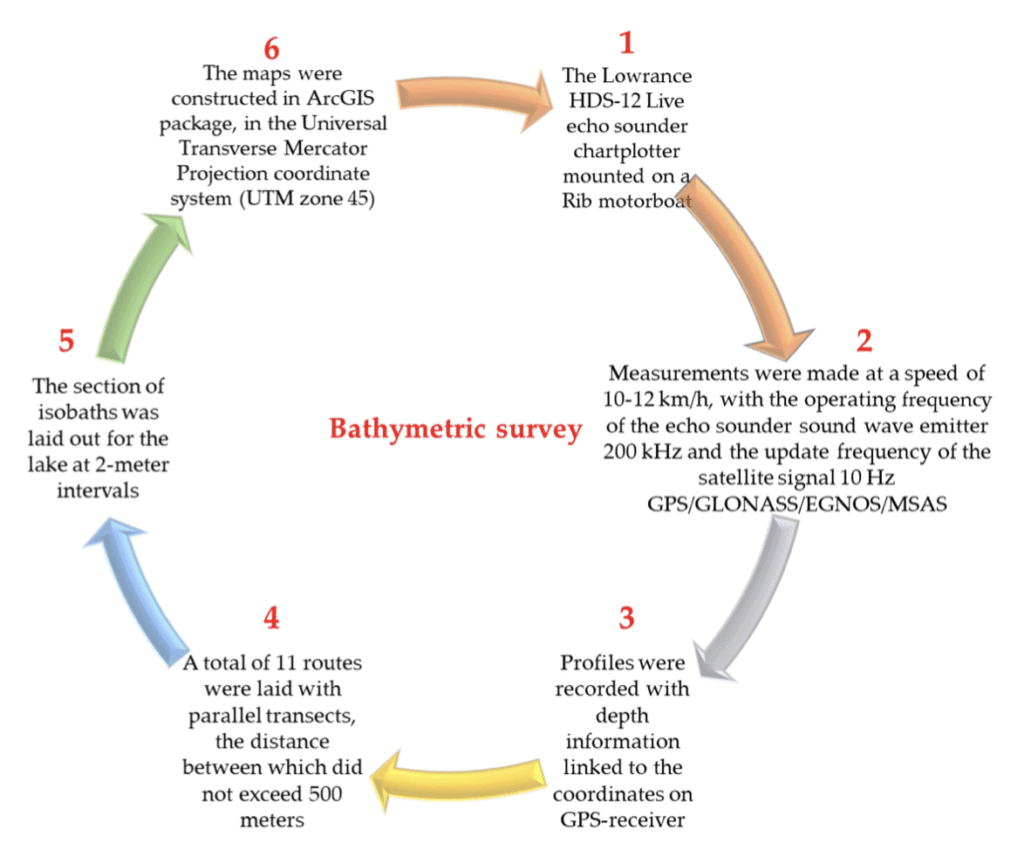 The workflow developed here is transferable to other remote alpine lakes, providing an invaluable baseline for limnological research, ecological assessment, hydrodynamic modeling, and long-term water resource management strategies in data-scarce mountain regions.
The workflow developed here is transferable to other remote alpine lakes, providing an invaluable baseline for limnological research, ecological assessment, hydrodynamic modeling, and long-term water resource management strategies in data-scarce mountain regions.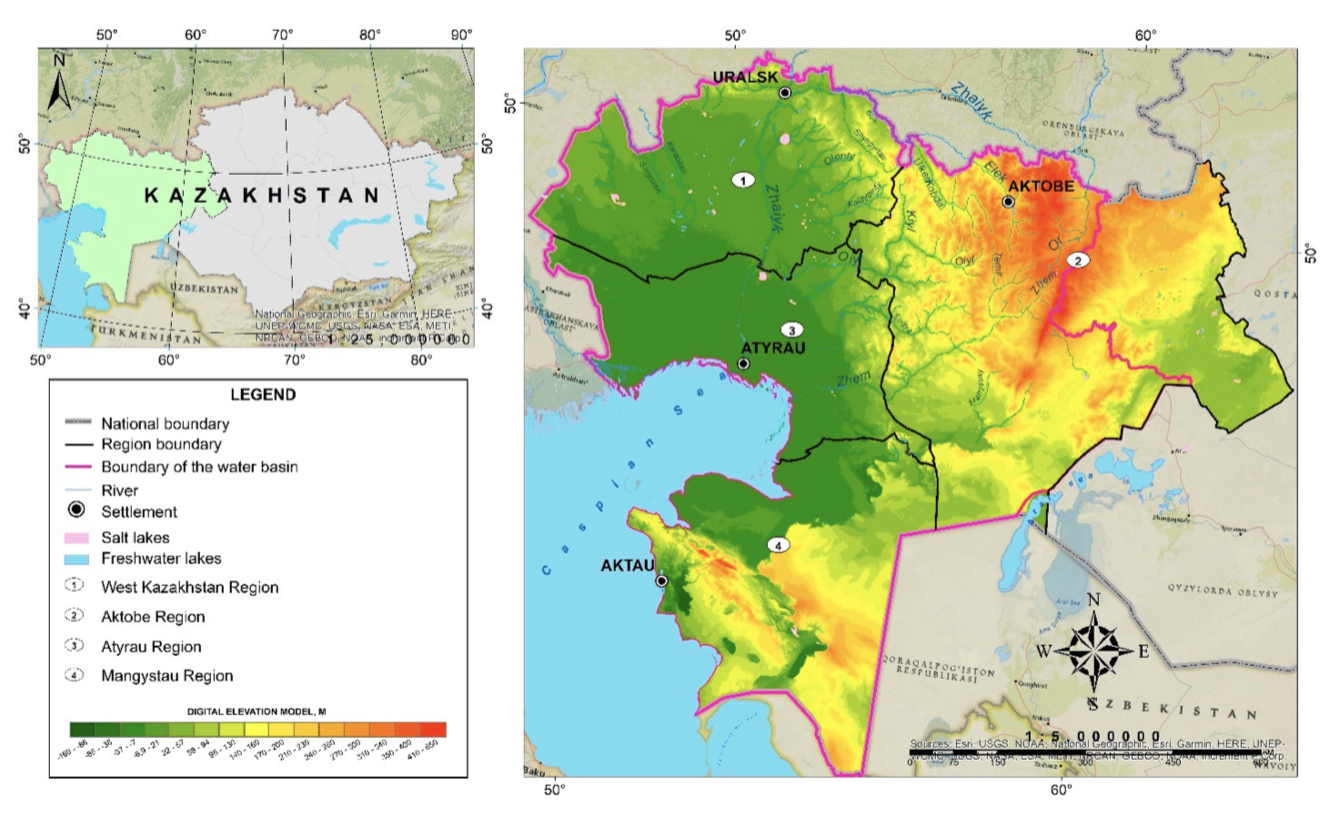
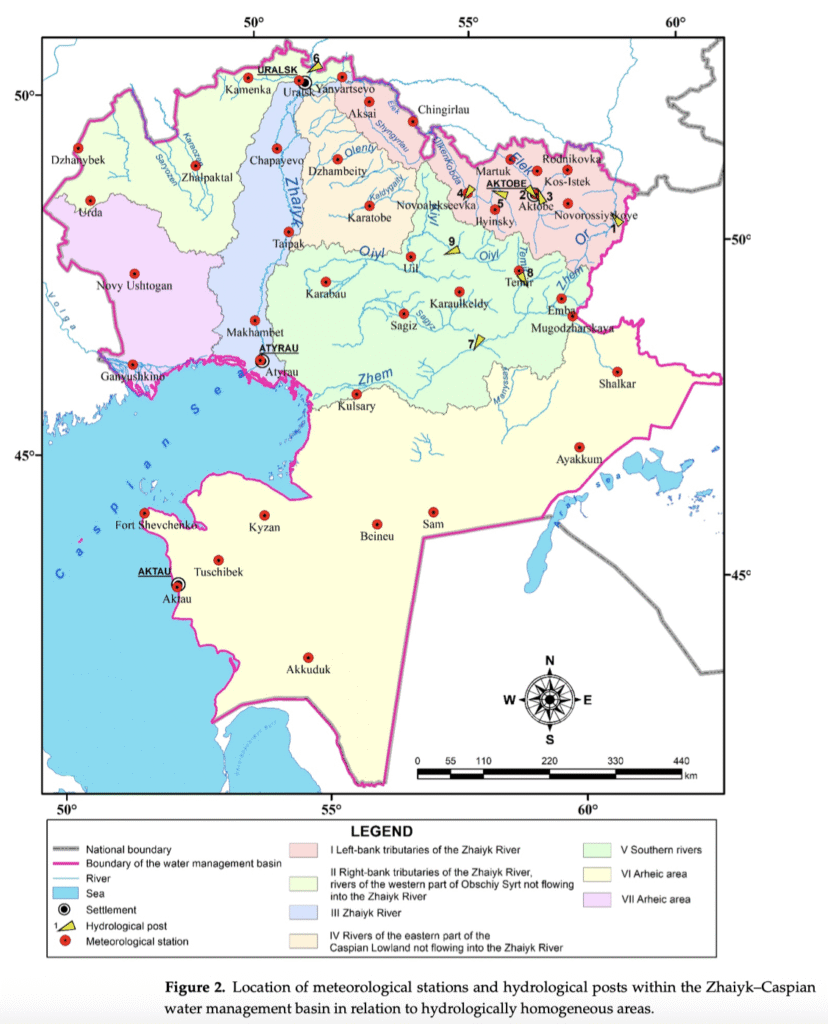 The analysis covers three future time horizons: 2040 (2031–2050), 2060 (2051–2070), and 2080 (2071–2090), under two greenhouse gas concentration scenarios: SSP3-7.0 (moderately high emissions) and SSP5-8.5 (high emissions). The results reveal a pronounced seasonal contrast in the projected hydrological response. During the winter low-water period, a steady increase in minimal runoff is projected for all rivers, with the most significant changes observed for the Or, Zhem, Temir, and Shagan rivers. This increase is primarily driven by higher winter precipitation, increased thaw frequency, and enhanced infiltration recharge. Conversely, despite modest increases in summer–autumn precipitation, minimal runoff during the summer–autumn low-water period is projected to decline significantly, particularly in the southern basins, due to elevated evapotranspiration rates and soil moisture deficits associated with rising air temperatures.
The analysis covers three future time horizons: 2040 (2031–2050), 2060 (2051–2070), and 2080 (2071–2090), under two greenhouse gas concentration scenarios: SSP3-7.0 (moderately high emissions) and SSP5-8.5 (high emissions). The results reveal a pronounced seasonal contrast in the projected hydrological response. During the winter low-water period, a steady increase in minimal runoff is projected for all rivers, with the most significant changes observed for the Or, Zhem, Temir, and Shagan rivers. This increase is primarily driven by higher winter precipitation, increased thaw frequency, and enhanced infiltration recharge. Conversely, despite modest increases in summer–autumn precipitation, minimal runoff during the summer–autumn low-water period is projected to decline significantly, particularly in the southern basins, due to elevated evapotranspiration rates and soil moisture deficits associated with rising air temperatures.
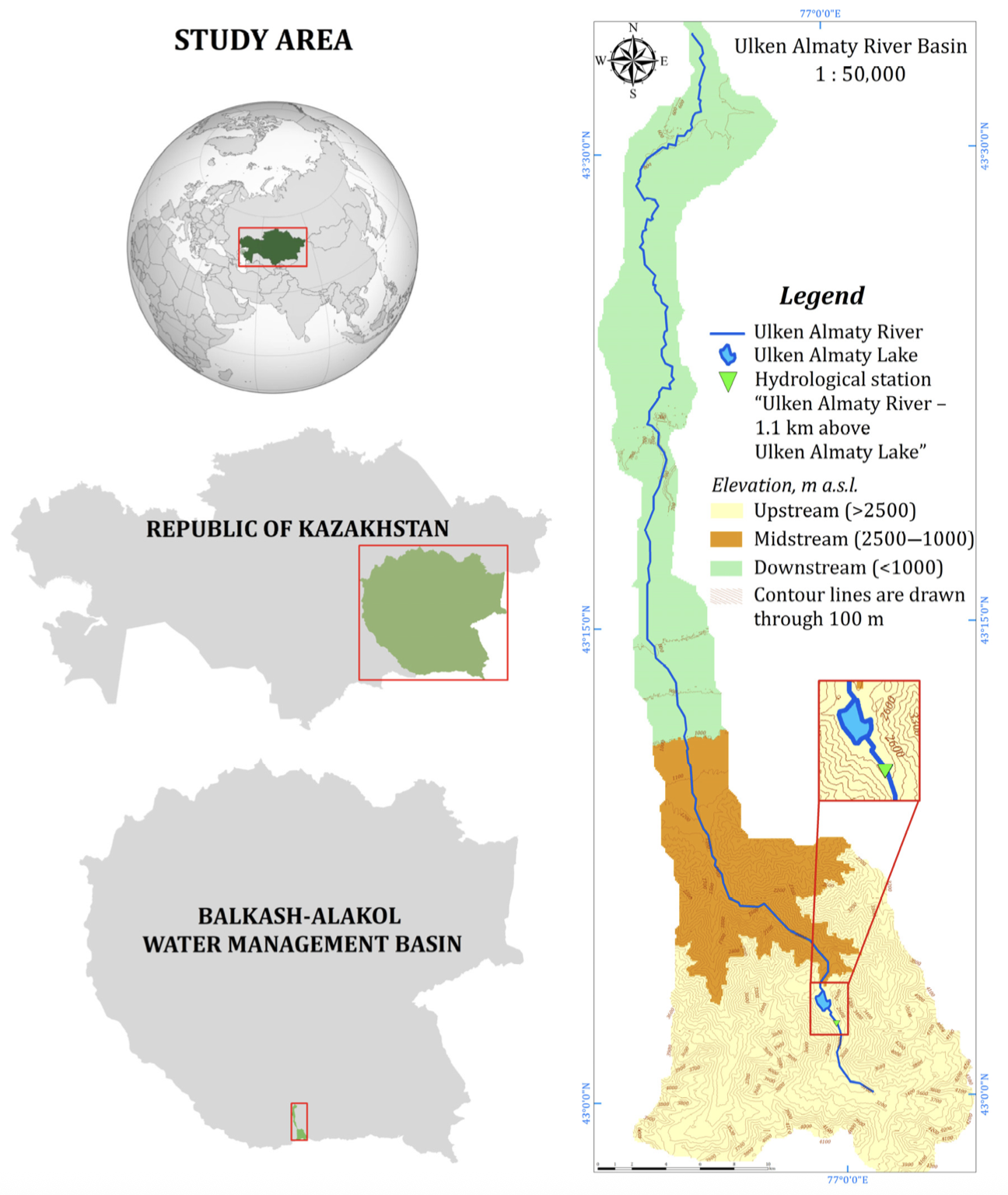
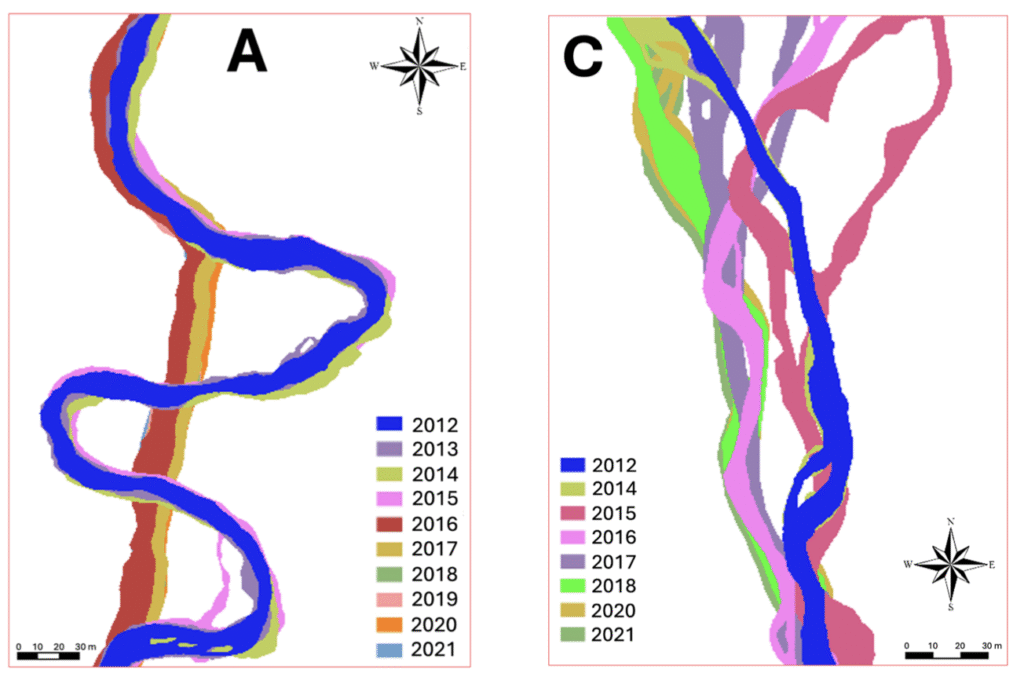 Research Overview
Research Overview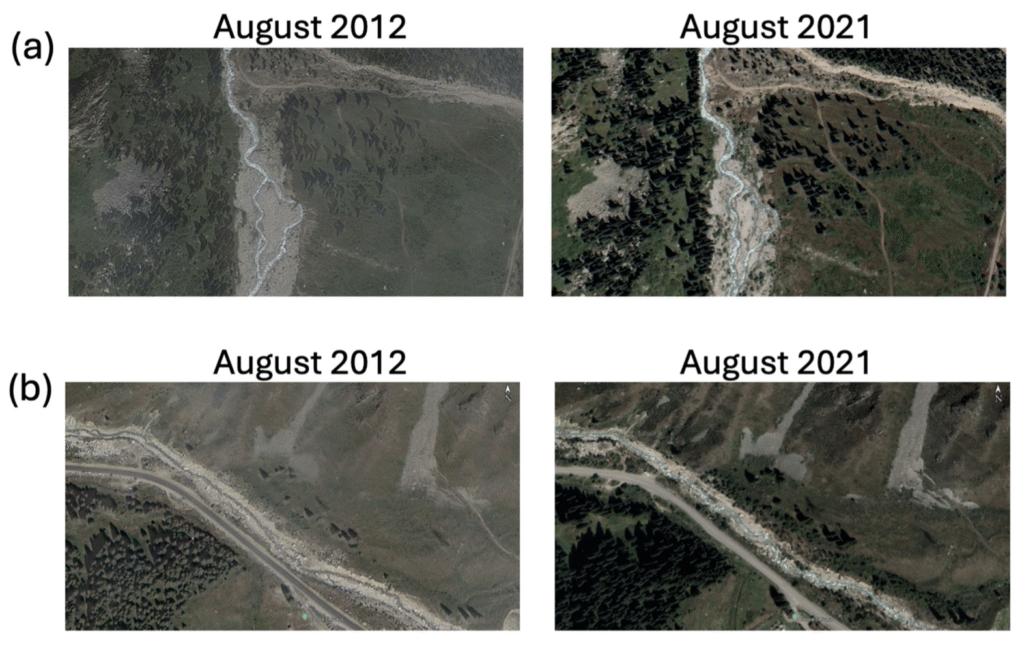 An International Research Effort
An International Research Effort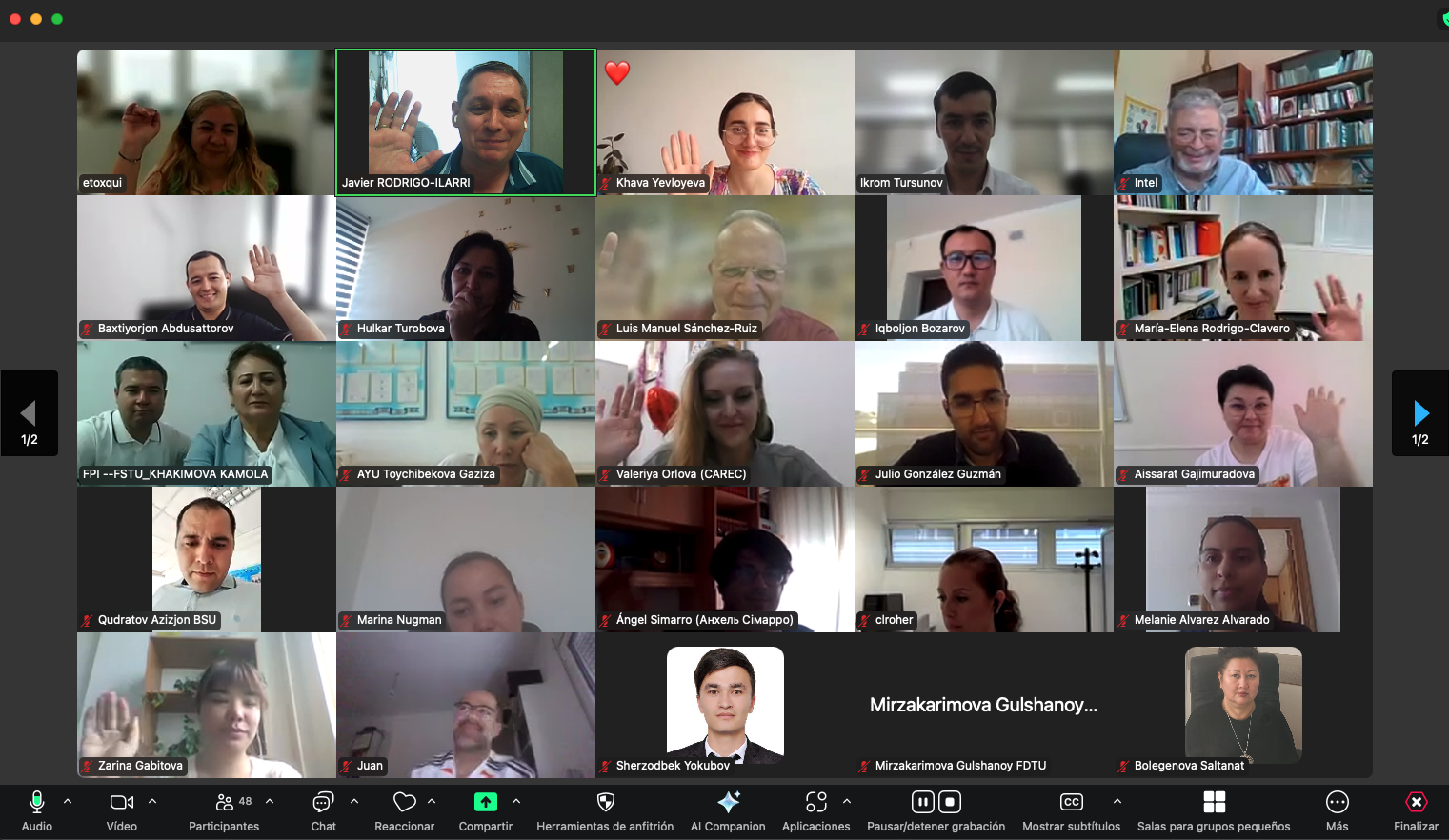
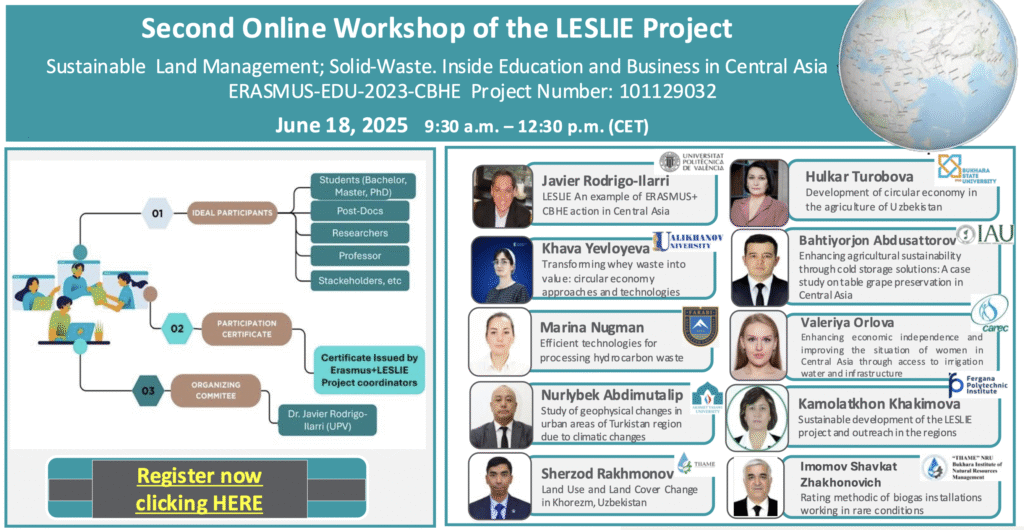 The event was chaired by Javier Rodrigo-Ilarri (UPV) in Part 1, and by Eleni Toxqui (UCY) in Part 2. A highlight was the presentation by Dr. Rodrigo-Ilarri, project coordinator, who outlined the broader scope and achievements of LESLIE as an exemplary Erasmus+ CBHE initiative in the region.
The event was chaired by Javier Rodrigo-Ilarri (UPV) in Part 1, and by Eleni Toxqui (UCY) in Part 2. A highlight was the presentation by Dr. Rodrigo-Ilarri, project coordinator, who outlined the broader scope and achievements of LESLIE as an exemplary Erasmus+ CBHE initiative in the region.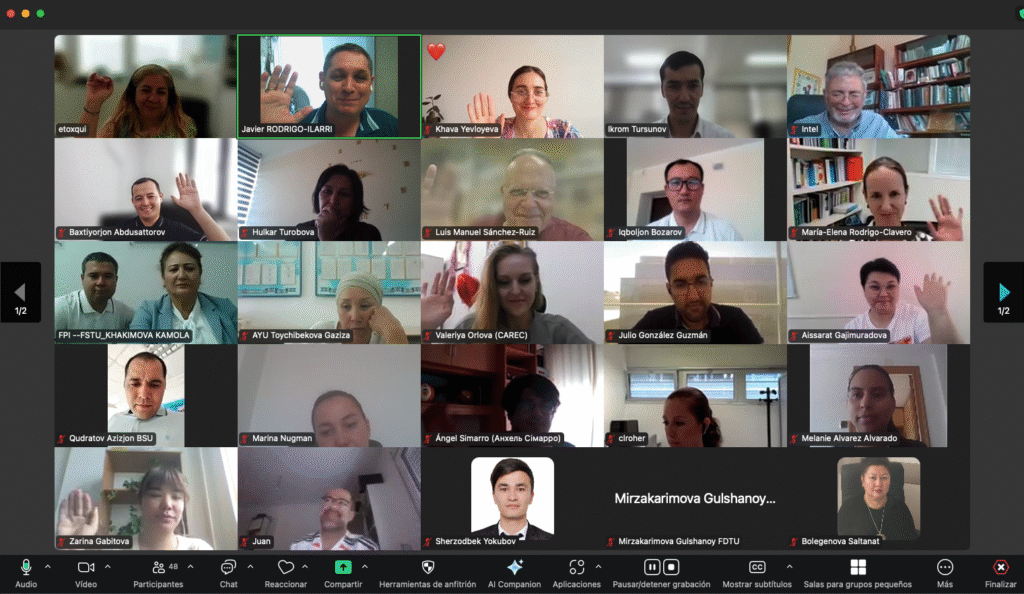
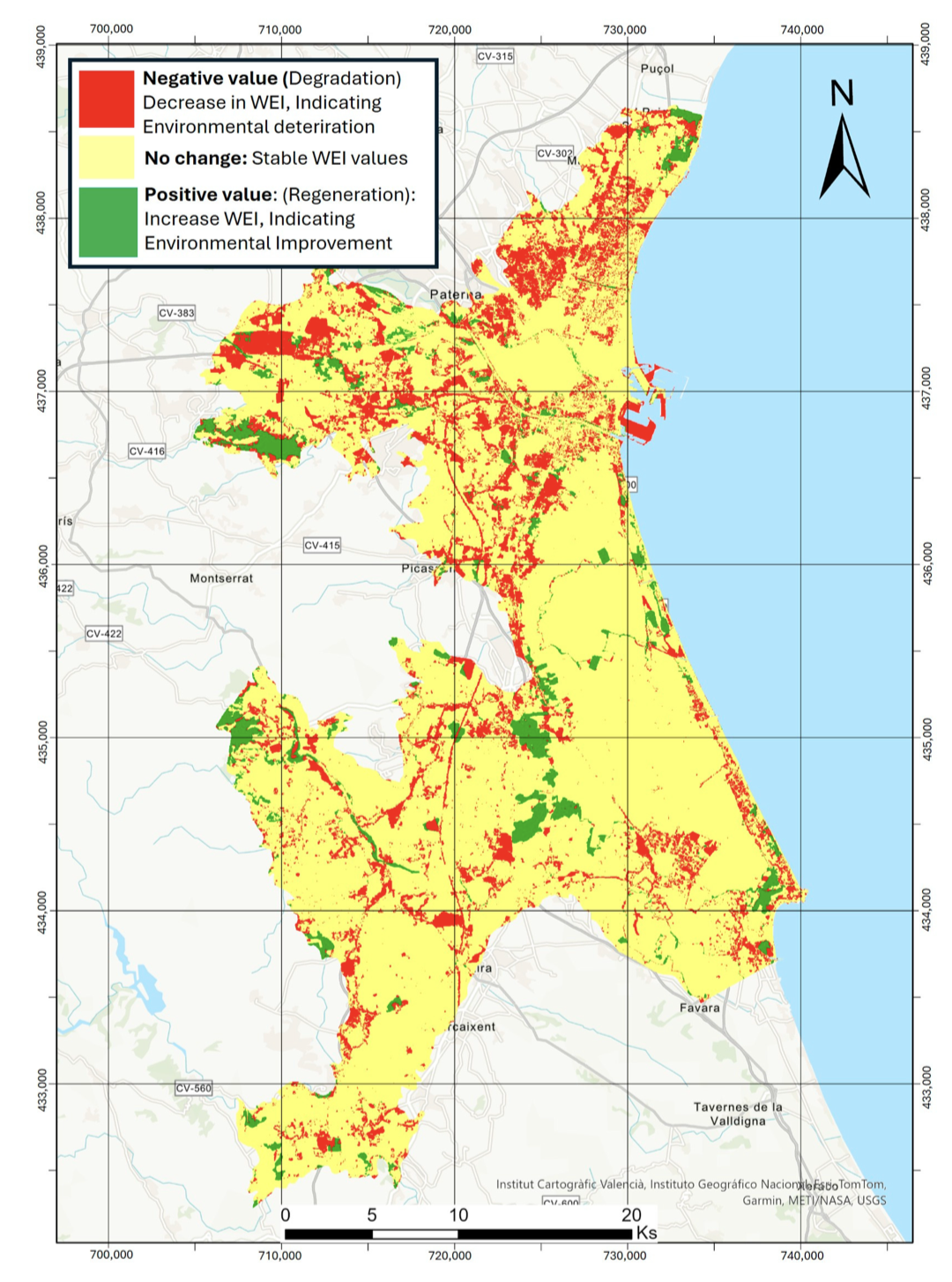
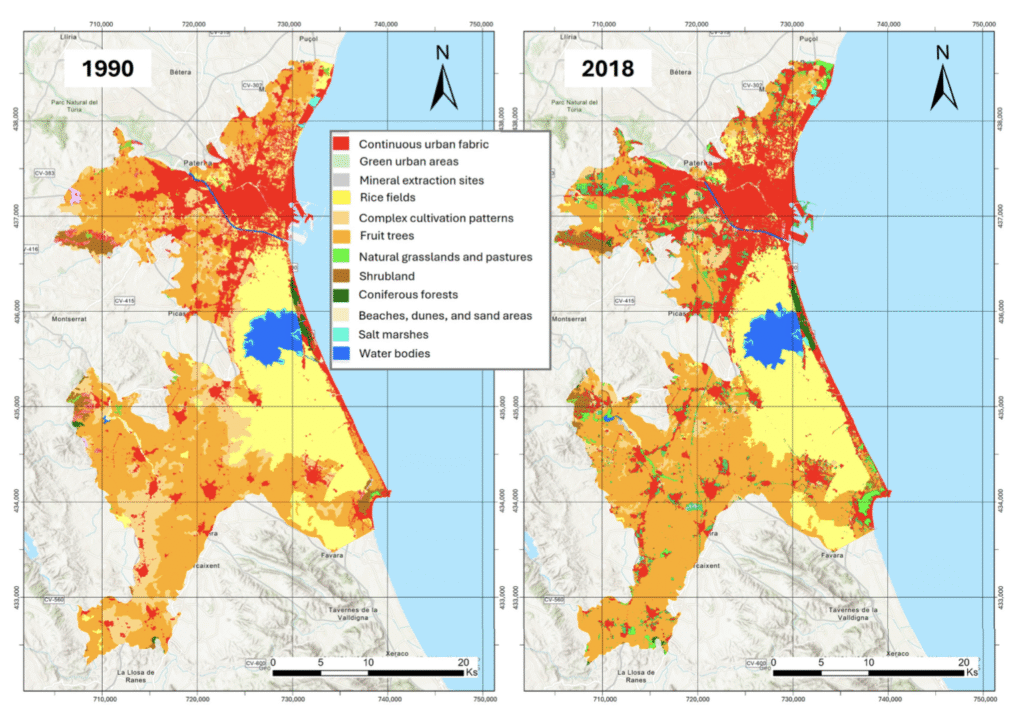 The study also warns of the negative impacts of urban encroachment on the Albufera Natural Park, one of the most ecologically valuable wetlands in the Mediterranean. The combination of urban growth, agricultural intensification, and inadequate spatial planning has reduced the park’s ecological integrity and exacerbated problems such as water pollution and habitat fragmentation.
The study also warns of the negative impacts of urban encroachment on the Albufera Natural Park, one of the most ecologically valuable wetlands in the Mediterranean. The combination of urban growth, agricultural intensification, and inadequate spatial planning has reduced the park’s ecological integrity and exacerbated problems such as water pollution and habitat fragmentation. The study demonstrates the usefulness of combining CORINE Land Cover and World Settlement Footprint satellite data to achieve high-resolution environmental assessments. The authors also underline the potential of the WEI as a decision-support tool for sustainable land management in Mediterranean metropolitan regions facing high anthropogenic pressure.
The study demonstrates the usefulness of combining CORINE Land Cover and World Settlement Footprint satellite data to achieve high-resolution environmental assessments. The authors also underline the potential of the WEI as a decision-support tool for sustainable land management in Mediterranean metropolitan regions facing high anthropogenic pressure.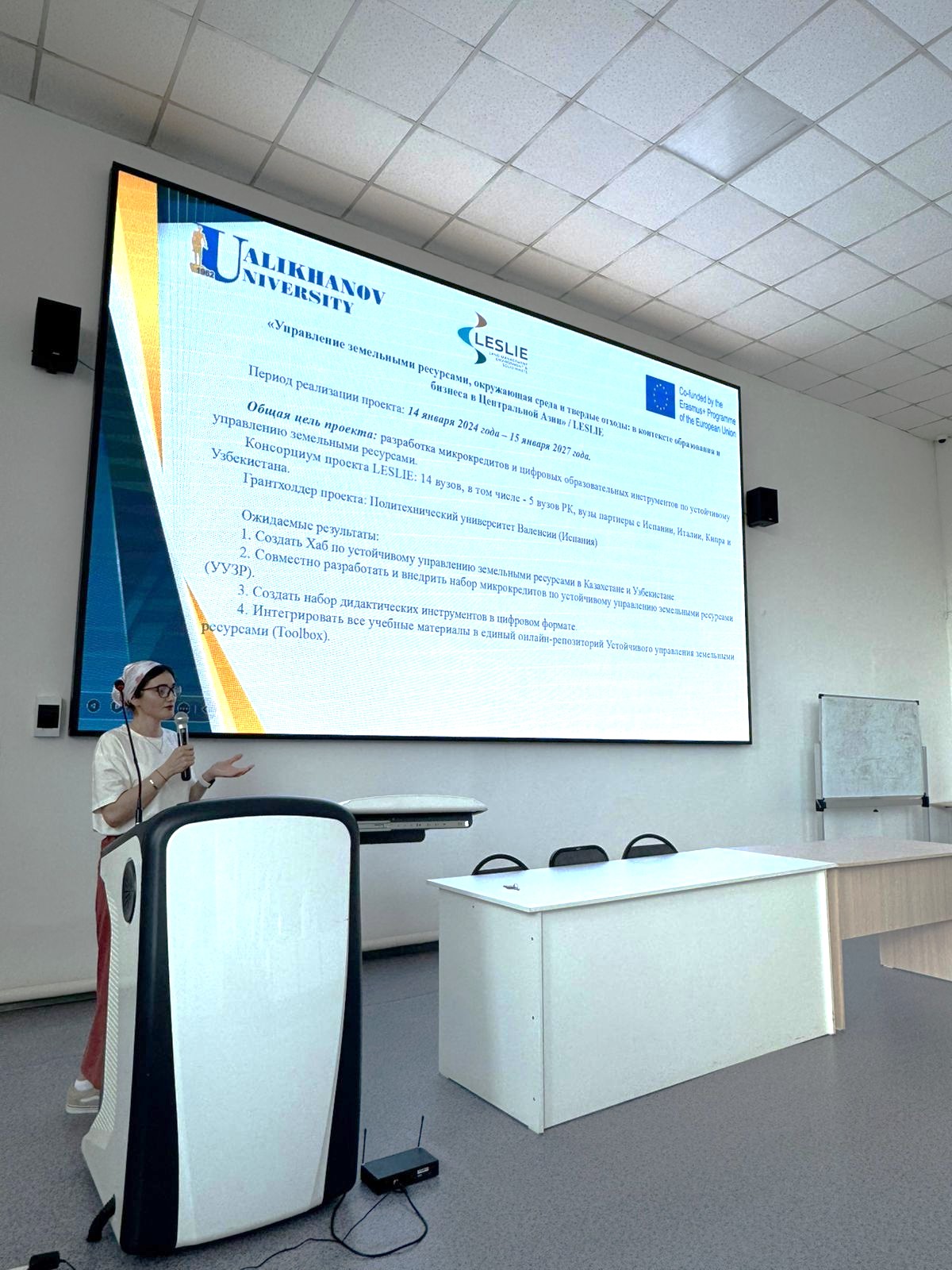
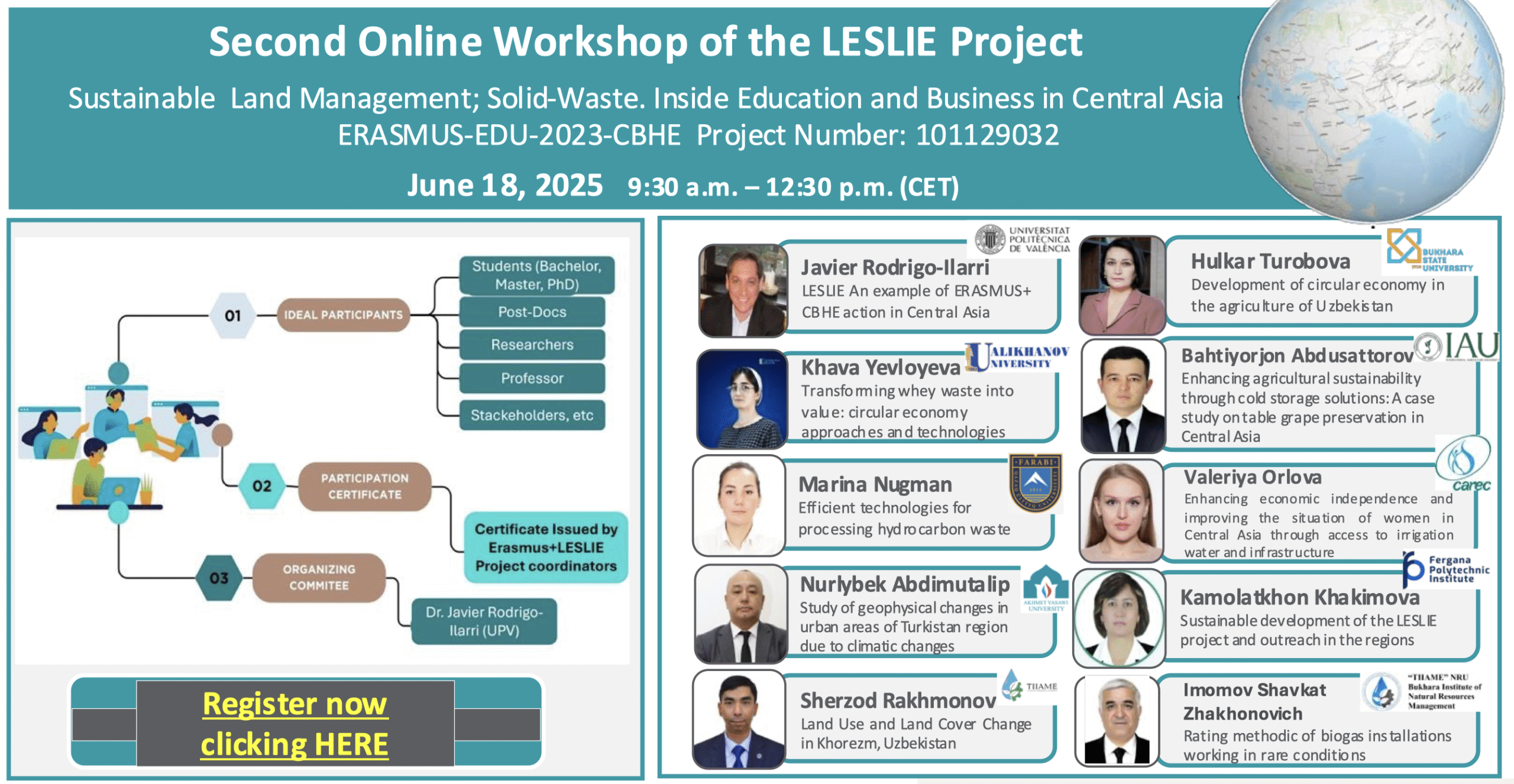
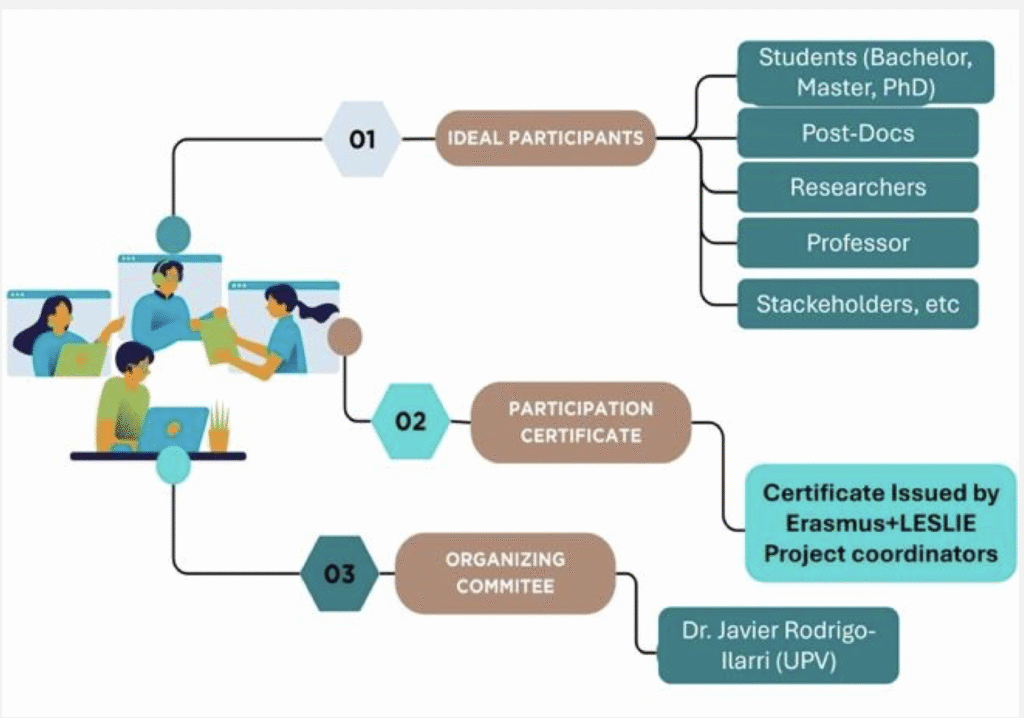 The workshop will be opened by LESLIE coordinator, Prof. Javier Rodrigo-Ilarri, who will introduce the keynote lecture: “LESLIE: An example of ERASMUS+ CBHE action in Central Asia”. His talk will highlight the strategic goals of LESLIE in advancing academic capacity and promoting cross-border collaboration in environmental education.
The workshop will be opened by LESLIE coordinator, Prof. Javier Rodrigo-Ilarri, who will introduce the keynote lecture: “LESLIE: An example of ERASMUS+ CBHE action in Central Asia”. His talk will highlight the strategic goals of LESLIE in advancing academic capacity and promoting cross-border collaboration in environmental education.